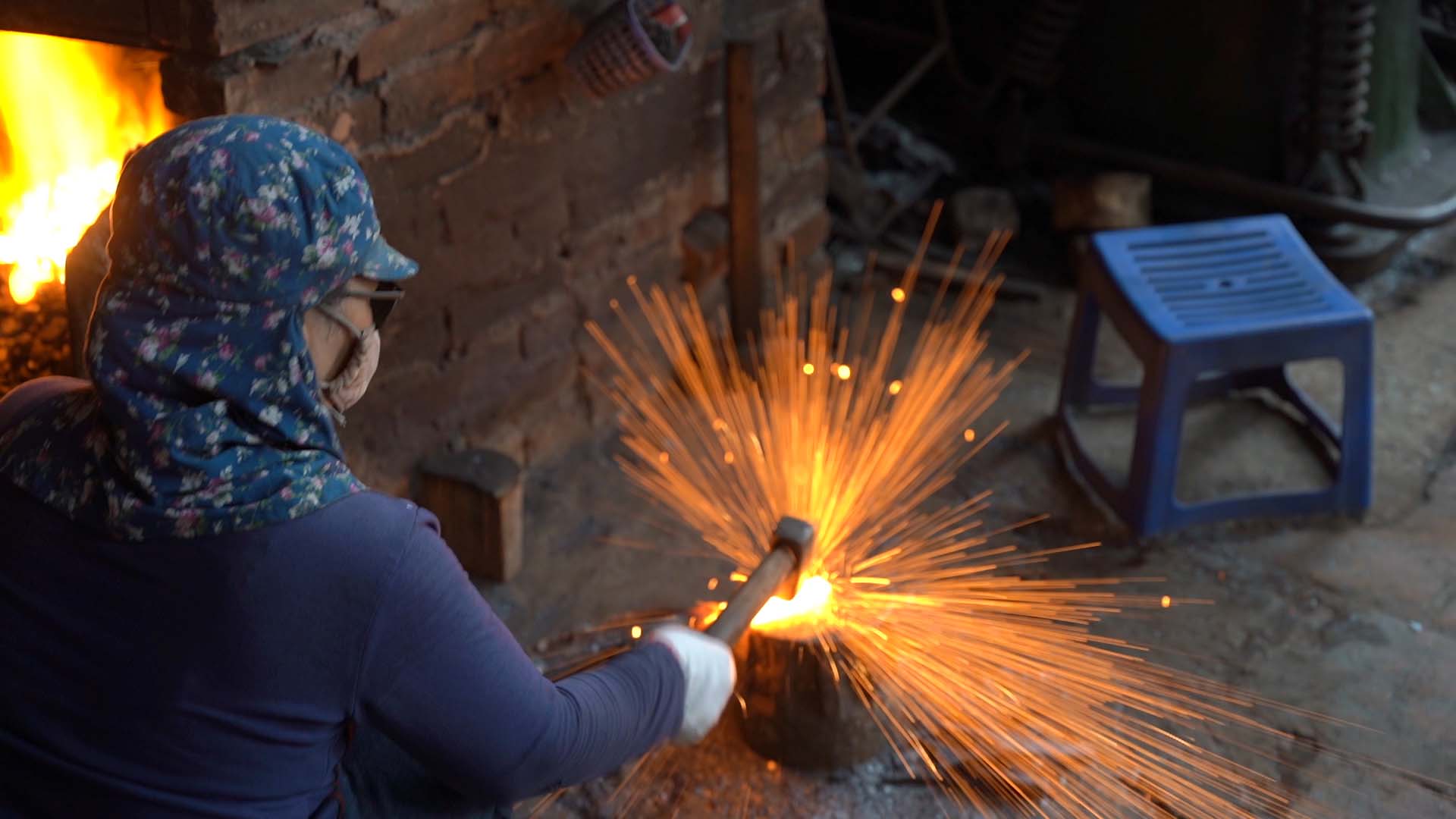Where is Hoa Lu Ancient Capital
The Hoa Lu Ancient Capital is located in Truong Yen, Hoa Lu, Ninh Binh, Vietnam, around 90–100 km Southeast of Hanoi. The Hoa Lu relic complex is a system of historical remains from the Hoa Lu capital during the Dai Co Viet era in Vietnamese history.
Some intriguing facts about Hoa Lu Ancient Capital include:
-
It was the first feudal capital of Vietnam and home to three successive dynasties in Vietnamese history.
-
The ancient capital is recognized as one of Vietnam’s most significant national heritage sites.
-
It is one of the four core areas of the Trang An World Heritage Complex - Vietnam’s first mixed cultural and natural UNESCO World Heritage site.
-
The area spans about 300 hectares.
-
It houses five national treasures, including the Buddhist pillar at Nhat Tru Pagoda and relics from the temples of Kings Dinh Tien Hoang and Le Dai Hanh.
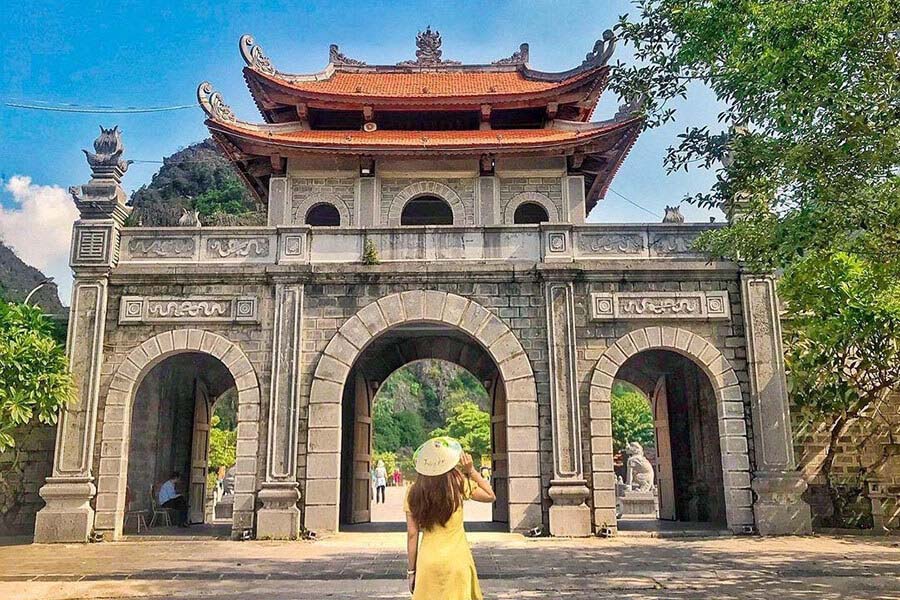
Entrance gate to Hoa Lu Ancient Capital
History
With over 1,000 years of history and its proximity to Hanoi, the Hoa Lu Ancient Capital preserves a wealth of historical relics, reflecting the turbulence and pivotal moments of Vietnam’s feudal era.
Hoa Lu’s historical significance revolves around the legacies of three dynasties: the Dinh, the Early Le, and the beginning of the Ly dynasty:
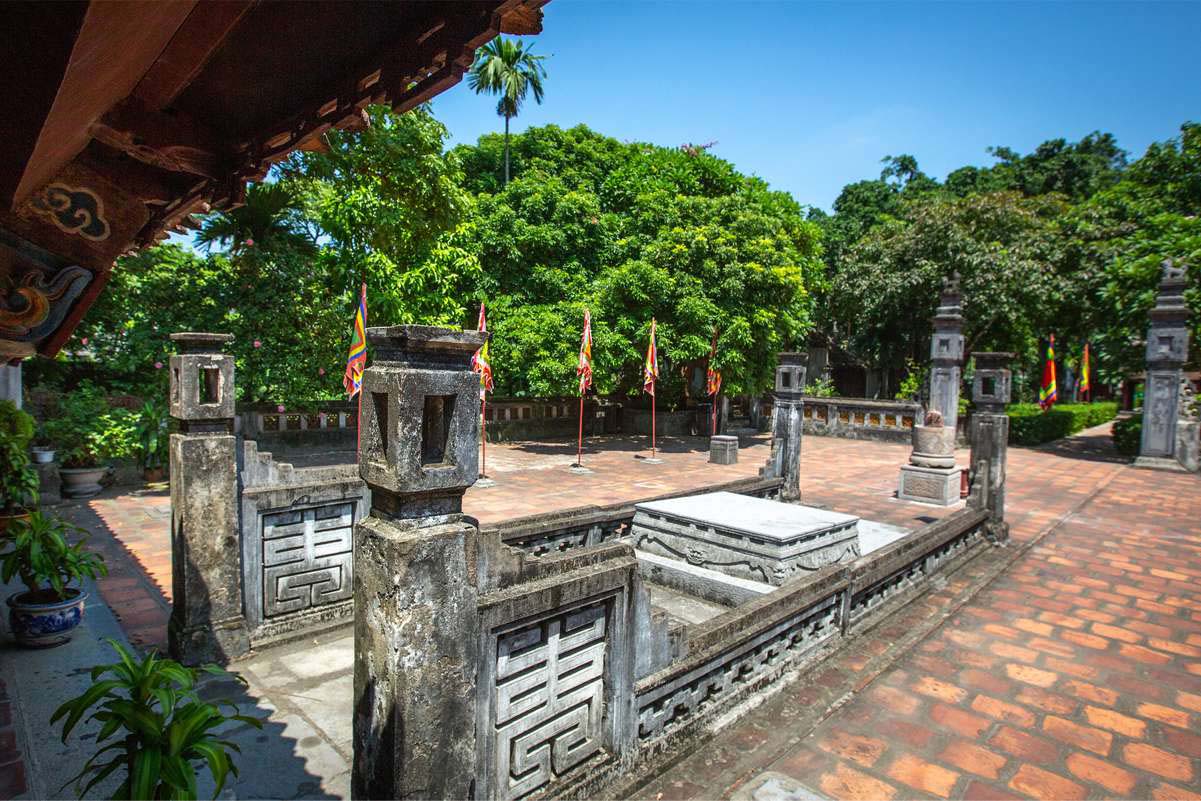
Hoa Lu Ancient Capital history
-
In 968, after unifying the country by defeating the 12 warlords, Dinh Bo Linh became emperor, founding the Dinh dynasty and establishing Hoa Lu as the capital of Dai Co Viet. This dynasty lasted for 12 years (968–980).
-
From 980 to 1009, the Le dynasty succeeded the short-lived Dinh rule, continuing to govern from Hoa Lu.
-
In 1009, the Ly dynasty took power. In 1010, King Ly Thai To relocated the capital from Hoa Lu (Ninh Binh) to Thang Long (Hanoi), marking the end of Hoa Lu’s reign as the capital.
Though subsequent dynasties did not base their capitals on Hoa Lu, they continued to restore and build additional structures such as temples, shrines, and pagodas in the area.
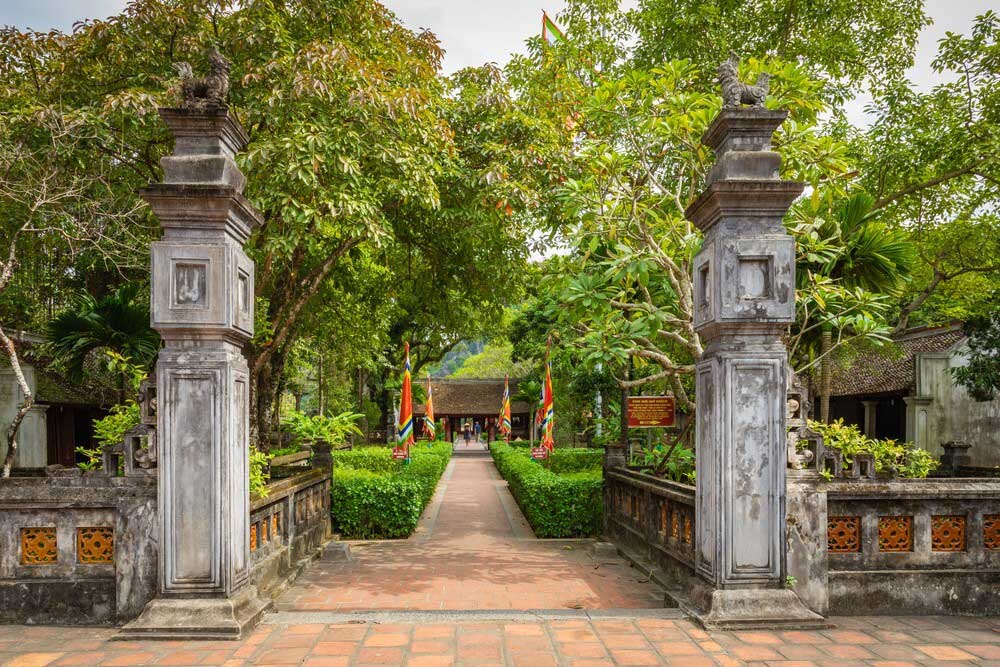
Although the monarchy has ended and the ravages of time have taken their toll, what remains of the Hoa Lu Ancient Capital holds stories of an era gone by
How to Get There
Traveling from Hanoi to Hoa Lu is straightforward, with several convenient and affordable transport options:
|
Mode of Transport |
Travel Time |
Cost |
Note |
|---|---|---|---|
|
Car/Long bus |
1,5 - 2 hours |
4 - 8 USD/ticket |
Fast and convenient. You can book a limousine for more privacy. Some reliable service providers:
|
|
Motorbike |
2,5 - 3 hours |
4 USD/ motorbike rental fee 1 day The petrol fee is about 0,8 USD/litre |
Easy route via Google Maps. You can park your bike (0.4 - 0.8 USD) and explore on foot. |
|
Train |
2,15 hours |
About 5,3 USD/ticket |
There are six daily trains to Ninh Binh Station from Hanoi. You can check and book via dsvn.vn website of Vietnam trains. From Ninh Binh Station (14 km from Hoa Lu), continue to take a taxi or motorbike taxi. |
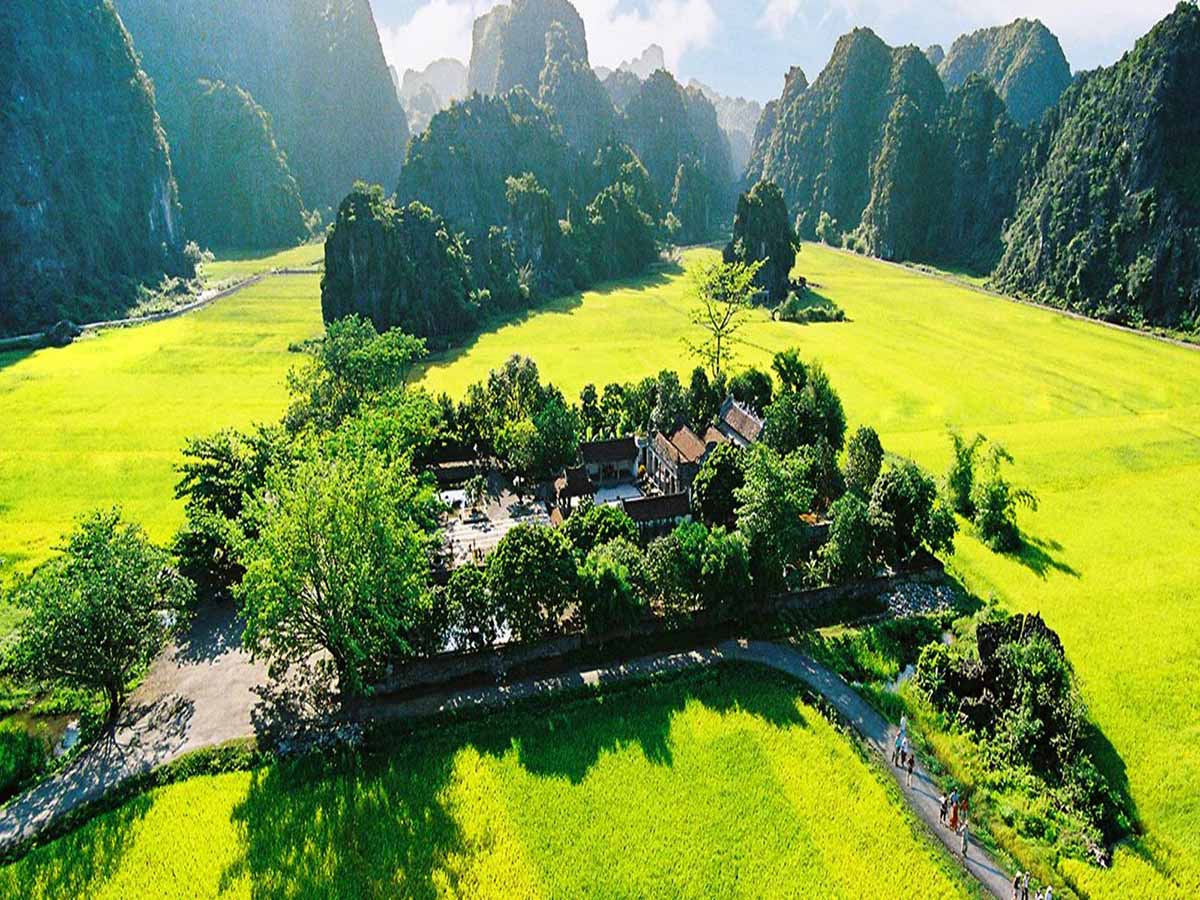
Guide to get to Hoa Lu Ancient Capital
Once in Ninh Binh, you can rent a motorbike or bicycle (bike rental is half the cost of a motorbike). Use Google Maps to find the nearest rental shop, or book a taxi through the Xanh SM app or contact: 0389168651 (Taxi Xuan Thanh), 02293636363 (Taxi Mai Linh).
Things to Do
Though Hoa Lu Ancient Capital is not fully intact today, the temples of King Dinh and King Le have been reconstructed to reflect the grandeur of the former capital. The main temples, originally built in the 11th century and reconstructed in the 17th century, have undergone several restorations over the centuries.
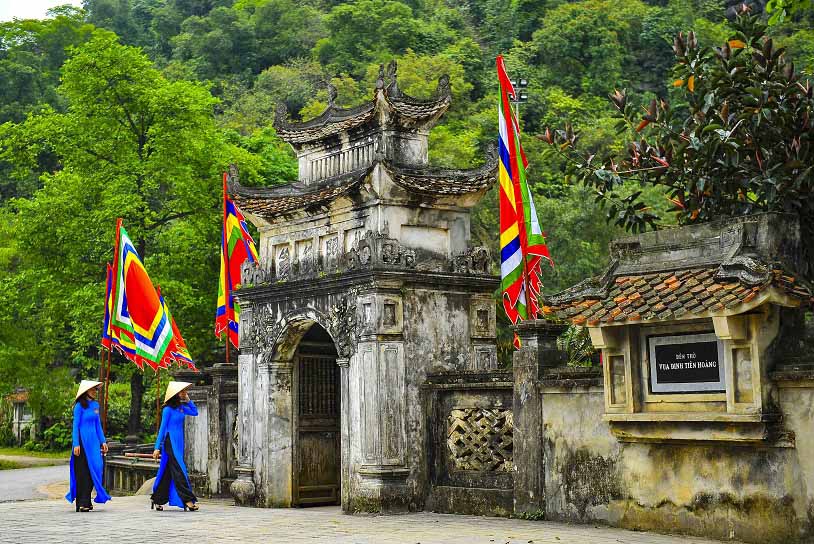
Things to do in Hoa Lu Ancient Capital
Visitors often enjoy a leisurely walk around the area, exploring the temples, mausoleums, and caves scattered throughout the complex, while learning about Vietnam’s rich historical legacy.
There are around 30 relics in the Hoa Lu complex, with key attractions including:
-
Temple of King Dinh Tien Hoang: The first emperor who unified the country and established Vietnam’s first feudal state.
-
Temple of King Le Dai Hanh: The first emperor of the Le dynasty, which succeeded the Dinh.
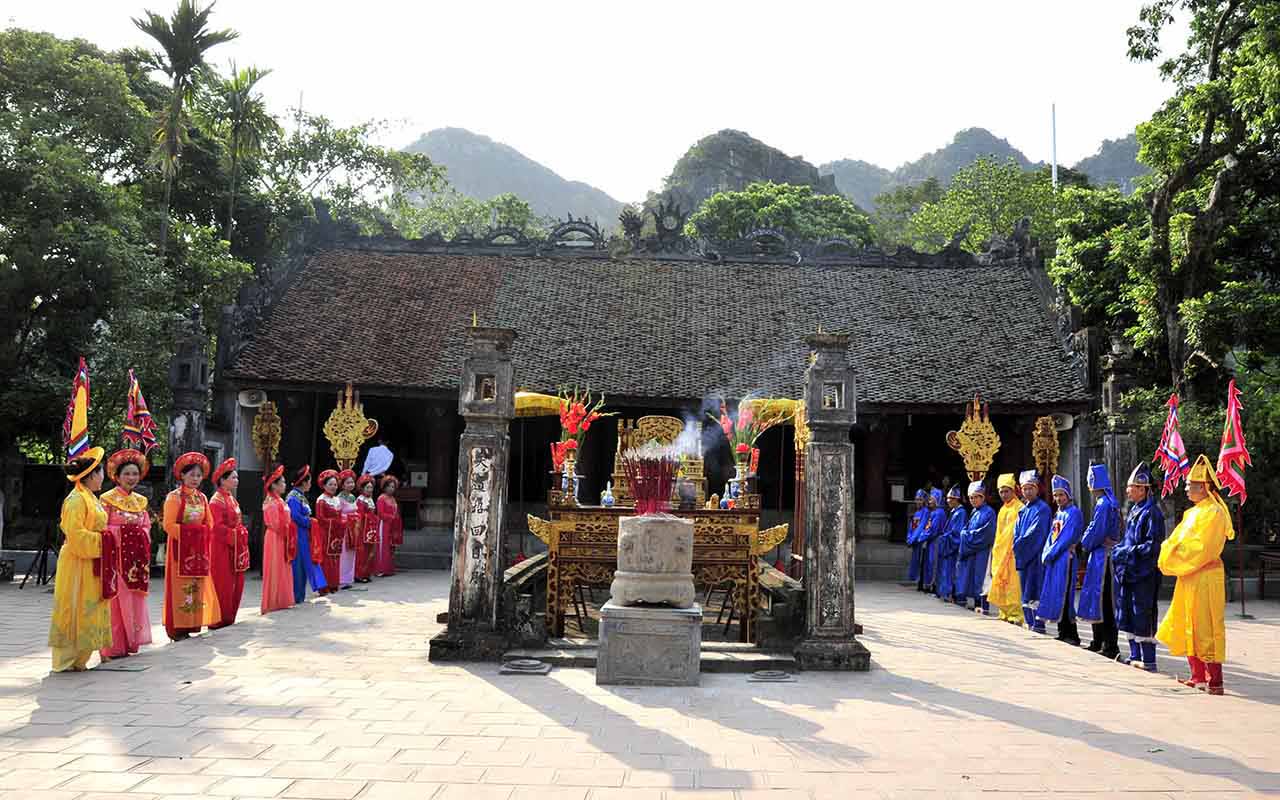
Traditional festival in Dinh - Le King Temples
-
Am Tien Pagoda and Cave: A scenic spot surrounded by mountains, also known as Tuyet Tinh Coc.
-
Nhat Tru Pagoda and Ngan Pagoda
-
Yen Thanh Shrine: A historic shrine dedicated to Kings Dinh and Le as village guardians.
-
Dong Vuong and Kinh Thien Shrines: Honoring important historical figures.
-
Temple of Princess Thuc Tiet: Celebrating the filial devotion of the daughter of King Dinh Tien Hoang.
-
East Gate Inscription: The only ancient stele in Hoa Lu, recording the history of a 10th-century path to the capital.
-
Mausoleums of King Dinh and King Le
-
Ma Yen Mountain: Resembling a giant saddle, it is where King Dinh Tien Hoang is laid to rest.
-
Muoi Cave and Quan Cave
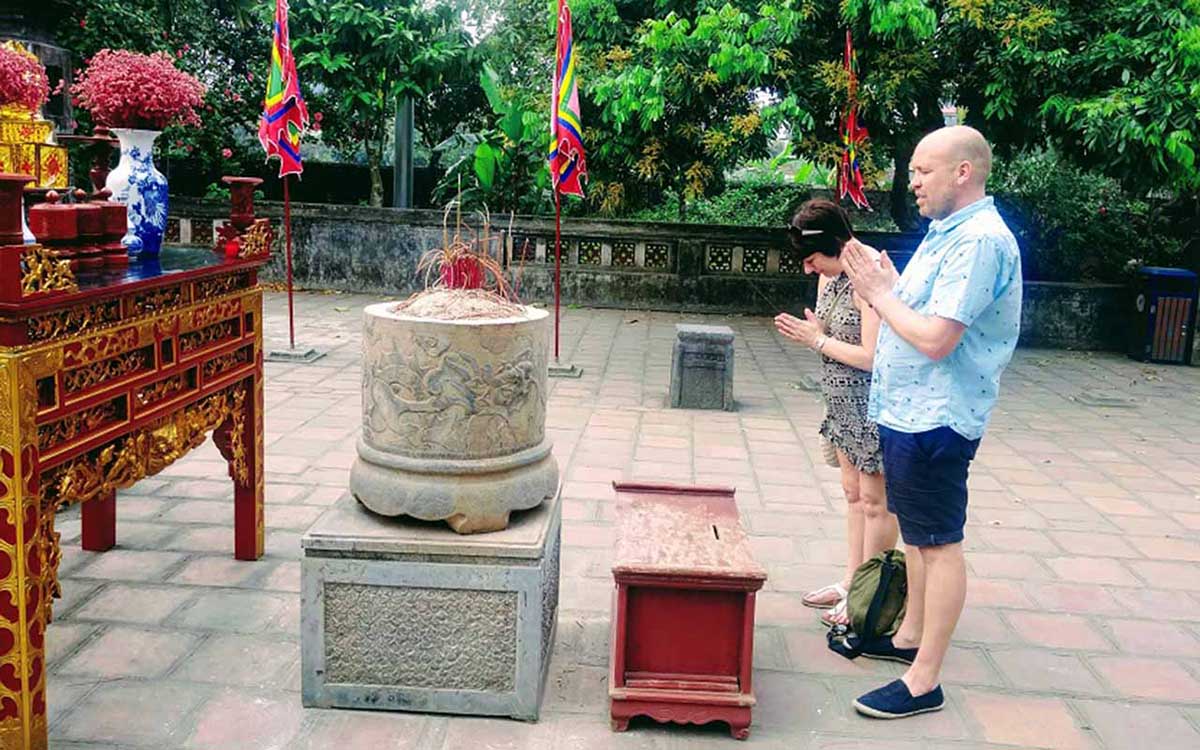
Visitors to Hoa Lu Ancient Capital
Surrounding the core of Hoa Lu Ancient Capital are other fascinating heritage sites, such as Trang An World Heritage Complex, Lien Hoa Cave, Ban Long Cave, Yen Trach Shrine, etc.
Despite the passage of time, which has covered much of Hoa Lu Ancient Capital with layers of history, the site remains one of the most important relics in Vietnam, preserving invaluable stories, relics, and historical markers.
Travel Tips
-
The entrance fee to Hoa Lu Ancient Capital is 20,000 VND (0.8 USD), and tickets can be easily purchased at the gate.
-
On-site guides are available to help you understand the historical narratives and suggest key spots to visit, with fees around 12.2 USD for a half-day tour.

The Procession Ceremony at Hoa Lu Festival
-
You can visit any time of year. For a more enriching experience, consider visiting during the Hoa Lu Festival from the 8th to 10th of the third lunar month or during the rice harvesting season in May and June.
For a related discussion, head to our article on Ninh Binh travel guide.
There are countless perspectives to explore in Hoa Lu Ancient Capital. If you want to include the destination in your Vietnam travel itinerary, feel free to browse our tours to Ninh Binh on our website or leave us a message for further assistance.





